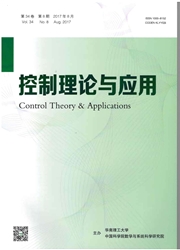

 中文摘要:
中文摘要:
动态智能交通(ITS)信息在微观层面提升驾驶员的预测能力和适应能力,在宏观层面表现为车队群体的预期性和适应性.本文引入期望密度/速度函数以及预期性和适应性调节系数扩展了元胞传输模型,弥补了原始模型未考虑ITS信息影响的不足.线性稳定性分析和收敛性仿真结果表明预期性和适应性会减少弛豫带来的负效应,增大交通流的线性稳定域,不同的状态调节系数组合刻画了不同程度的预期性和适应性,改变了平衡曲线与收敛速度,智能交通信息将有益于辅助安全驾驶和减少道路拥堵.
 英文摘要:
英文摘要:
The anticipative and adaptive capabilities of drivers can be improved by using intelligent transportation sys-tem(ITS) information on the microscopic level,while the vehicle platoon re?ects macroscopic properties of anticipation and adaptation.This article incorporates the expected density/speed function and the accommodation coefficients of antici-pation and adaptation with cell transmission model(CTM) to makes up the insufficient ITS information.The linear stability analysis and convergence simulation show that the proposed anticipation reduces the delay in reaction from drivers;while the adaptation increases the stability of the vehicle platoon.Different combination of coefficients depicts different degrees of anticipative and adaptive behaviors,thus changing the equilibrium curve and convergence rate.ITS information improves drive-safety and reduces traffic congestion.
 同期刊论文项目
同期刊论文项目
 同项目期刊论文
同项目期刊论文
 期刊信息
期刊信息
